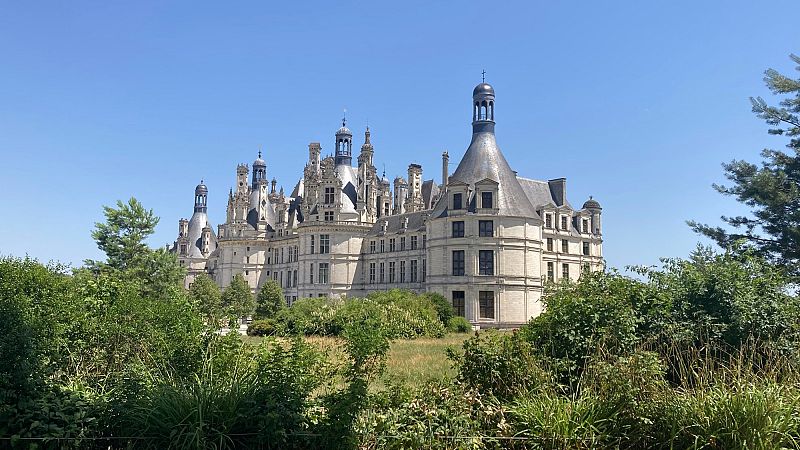A Journey Through the Loire Valley
If the renowned French writer Victor Hugo had visited the Château de Chambord today, it’s safe to say he would have been sharing it widely on social media. After visiting for the first time, he wrote: “Can you imagine, dear Paul, that ever since I saw Chambord, I have been asking anyone and everyone: Have you seen Chambord?” Standing before this fairy-tale castle, crowned with its vibrant turrets, I know exactly how he felt. Commissioned by François I in 1519 and completed in the 17th century, it is considered a masterpiece of Renaissance architecture. At its heart is a double-revolution staircase inspired by Leonardo da Vinci.
While Chambord is arguably the most famous, every château in the Loire Valley, of which more than a hundred can be visited, has its own unique charm. The region also boasts renowned vineyards, historic towns, and flower-filled villages. At the heart of it all lies the longest river in France, the Loire.
A World-Renowned Destination
It’s no surprise that a significant portion of the Loire Valley was designated a UNESCO World Heritage Site in 2000. This year marks its 25th anniversary. Spanning 174km from Sully-sur-Loire to Chalonnes-sur-Loire, it is one of the largest listed sites in the country. However, it’s nearly impossible to see everything in the UNESCO area on a single trip, let alone the wider region. But what better excuse to plan a return visit? Especially as the Loire Valley is just an hour’s train ride from Paris.
If you’re coming from that direction, an ideal starting point is Orléans, often referred to as the gateway to the Loire Valley. One of the oldest cities in France, it was famously liberated by Joan of Arc from the English siege of 1429. Today, her presence is still evident—through statues, streets named after her, and stained-glass windows in the Gothic cathedral of Sainte-Croix.
This relaxed riverside city is also known for its waterfront, Renaissance buildings, and vibrant street art. Local artists such as M. Chat, Tag Lady, and MifaMosa are revered almost as much as Joan of Arc. There are also intriguing museums and subterranean tours to explore.
On the Trail of Châteaux
The next morning, we head to Château de Meung-sur-Loire, known as ‘the castle with two faces.’ One side maintains its medieval exterior, while the other features an 18th-century salmon-pink façade. Outside, a dragon-themed trail includes impressive animatronics, and a serene rose garden offers a peaceful escape.
Beyond the châteaux, a vineyard visit is a must in the Loire Valley. As one of France’s leading wine regions, there is a diverse range of wines—from Sancerre’s whites to Saumur’s sparkling varieties and Chinon’s reds. Even Chambord now produces its own organic wines, reviving an old tradition. During a tasting, a sparkling rosé called La Favorite lives up to its name.
That evening, we take a boat trip on the Loire in a traditional wooden vessel. Joining an excursion with Moments de Loire, our guide shares fascinating insights about the river’s ecosystem. Though we don’t spot the resident beavers, we do see dragonflies and a large heron.
Where Gardens Meet Fairy Tales
For garden lovers, the Domaine de Chaumont-sur-Loire should not be missed. Alongside its remarkable château, once home to Catherine de’ Medici, the estate hosts the International Garden Festival. This year’s theme, ‘Once upon a time, in the garden,’ has created magical results.
A detour south to the Royal City of Loches is also recommended. One of the finest fortified cities in the country, it features architecture dating back over a thousand years. At its heart is the Royal Lodge, once favored by Charles VII, and a well-preserved medieval keep.
Not far from here, the village of Montrésor—officially one of France’s ‘most beautiful’—offers picturesque streets, a verdant valley, and a lovely château. Don’t miss the statue of the ‘Fallen Angel’ by Constantino Corti, admired by Sir Mick Jagger.
The Da Vinci Connection
For our final day, we visit the Château Royal d’Amboise, a favorite of the French kings. Overlooking the Loire, it features Renaissance splendor, panoramic views, and aerial gardens. It is also the final resting place of Leonardo da Vinci, whose tomb can be found in the chapel of Saint-Hubert. At the nearby Château du Clos Lucé, where he spent his last days, his life is celebrated in one of the area’s cultural highlights.
We then make a sojourn south to Chédigny, the only village with the status of ‘Jardin Remarquable.’ Home to over a thousand rose bushes, it is a must-visit. The annual Festival des Roses is highly recommended, as is lunch at Le Clos aux Roses with its wisteria-covered terrace.
Au Revoir, Not Goodbye
Later that afternoon, we head into Tours, a city buzzing with locals, students, and visitors. We take a gastronomic tour with Sheena from Food Tours in Tours, enjoying the lively square of Place Plumereau with its timber-framed buildings.
We end at the Guinguette de Tours, sipping local wines as the sun sets over the river. It’s been a whirlwind tour, but a wonderful week. My only regret is that I wish I’d seen more. Next on my list is the troglodyte caves, the riverside cycle route, and a visit to Blois. In the meantime, like Victor Hugo with Chambord, I’ll be asking anyone and everyone: Have you seen the Loire Valley?







